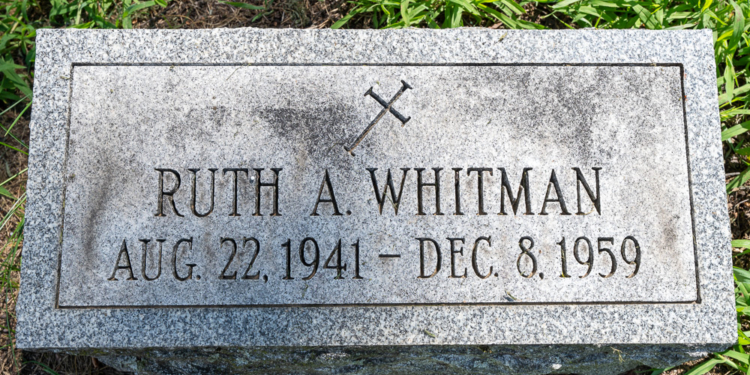COLONIE — On Monday, police exhumed the body of an 18-year-old murder victim, buried since 1959, and sent potential evidence to a lab in Virginia to hopefully solve the crime that has baffled law enforcement for decades.
After she was exhumed from her grave in the Cavalry Cemetery in Glenmont, and the body was examined by a medical examiner, she was re-buried in a Catholic ceremony attended by her family.
Read the original story about how the exhumation came about here.
Written reports from the time indicate there were skin scrappings found under the Whitman’s nails, but all physical evidence gathered in 1959 and 1960 inexplicitly disappeared when the State Police moved its lab from Colonie to Albany sometime in the 1970s.
The scrappings are, presumably, from the killer, and using DNA technology not available in 1959 it could definitively rule suspects in or out. Several suspects who are still alive volunteered DNA samples and the family of those deceased did the same.
Nelson Paul, Whitman’s fiancé is still alive and living in Canada, volunteered a DNA sample and it was secured by the Canadian Royal Mounted Police force and sent to Colonie. He has maintained his innocence and has an alibi — he was working the night of the murder — and he has begged Colonie police to solve the murder.

Robert Garrow, one of the Capital District’s most notorious serial killer, lived in Whitman’s neighborhood at the time. He was shot to death while attempting to escape from prison, but his son and his brother have volunteered a DNA sample.
There are at least two other prime suspects, one alive and one dead. Police has secured DNA from the dead man’s family but have not yet spoken to the suspect who is alive and living in Florida.
The case generated substantial media and law enforcement attention after Whitman’s body was found along Sand Creek Road on Dec. 8, 1959. But who beat her and left her in a water-filled ditch to drown remains a mystery. While the case was never closed, it was shelved until 1970, re-opened again in 1993, 2012 and 2019 and now, in 2022, with the exhumation.
The relatively new lead investigator on the case, Sgt. John Santorio, applied for and received a $10,000 grant from Season of Justice, a non-profit based in Indiana that helps fund the investigation of cold cases, largely by paying for advanced DNA testing.
Colonie police received permission from Whitman’s surviving family, including a twin and two other sisters, as well as Cavalry Cemetery in Glenmont where she is interred, the Roman Catholic Diocese of Albany, the District Attorney’s Office and, lastly, an Albany County Court judge.
It could take up to 24 weeks before the evidence is tested to determine if there is DNA that can be used to further the case.
A medical examiner also made a mold of a wound on Whitman’s head and will determine if it matches the butt end of a knife used by Garrow in the commission of his other crimes. The original knife disappeared — believed to be in the possession of a collector — but police purchased the same make and model on eBay to compare to the dimensions of the wound.
This story will be updated for our print edition.



